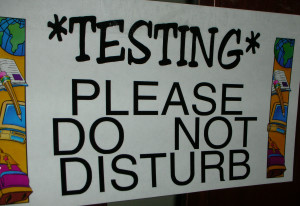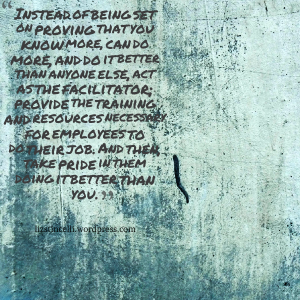 “It’s just that if you’re not disruptive, everything seems to be repeated endlessly – not so much the good things, but the bland things – the ordinary things – the weaker things get repeated – the stronger things get suppressed and held down and hidden.” —Robert Adamson
“It’s just that if you’re not disruptive, everything seems to be repeated endlessly – not so much the good things, but the bland things – the ordinary things – the weaker things get repeated – the stronger things get suppressed and held down and hidden.” —Robert Adamson
By Elizabeth Stincelli, DM
What a great opportunity the start of a new year brings you. Why not throw the same-old, same-old out the window? Stop using habits and the status quo as your default. Challenge yourself to stretch beyond your current capabilities. Stop playing it so safe; let go of the fear of making mistakes. Start asking different questions, looking at things with new eyes, and find the opportunities that lie in disruption. So, where should you start?
Break out of your routine
Your daily routine allows you to go on autopilot. In this mode you miss so many opportunities to see, experience, and brainstorm new things. Muster up the courage to lose a little of the control that your routine provides you. What a powerful way to break out of your every day behaviors. Don’t allow yourself to become complacent. Disrupt the status quo, disrupt your habits, and disrupt your routine.
Stimulate new ways of thinking
Establish curiosity and continual learning as part of your very being. Surround yourself with those who think differently from you, who have a unique perspective. Encourage them to challenge you to think in new ways. Learn to ask great questions of both yourself and others. What new insights might you discover? Work on becoming more mindful. Small, positive changes in the way you think will make a big difference over time.
Step out of your comfort zone
When you step out of your comfort zone, you expose yourself to a world of new experiences. And, with experience comes confidence. What better place to build confidence than outside of your comfort zone? Stepping outside your comfort zone may put you at risk of making a mistake. You might even fail when trying something new. But, it also opens up your imagination, gives you a new perspective, and helps you to reframe the way you think about failure. Be willing to feel a little uncomfortable, learn from your mistakes, and seize the new opportunities that await you outside of your comfort zone.
Learn from the unexpected
When you disrupt your current way of thinking and behaving you are bound to encounter the unexpected. Our brains love to gravitate toward what is familiar; start to intentionally seek out the unfamiliar. Put yourself in new places and situations; surround yourself with new people. Shifting the way you think and behave is almost like giving yourself a fresh start. Challenge yourself, face the unexpected, learn the lessons that are out there for you, and never stop growing.
Here’s Your Chance
Stop repeating the bland, weak, ordinary things. Break out of your routine, stimulate new ways of thinking, step out of your comfort zone, and learn from the unexpected. Here’s your chance; make it a disruptive new year!
© 2015 Elizabeth Stincelli
Liz Stincelli is passionate about recognizing and inspiring the leader in each of us. She is the CEO of Stincelli Advisors where she focuses on helping organizations engage employees and improve organizational culture. Liz holds a Doctor of Management degree with an emphasis on organizational leadership.
Learn more about Liz by visiting her website, stincelliadvisors.com and connect with her on Twitter @infinitestin, Google+, and LinkedIn. You can contact her by email at stincelliadvisors@gmail.com.









